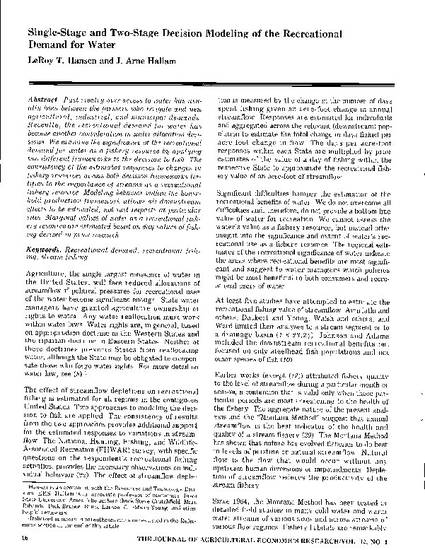
Past rivalry over access to water has usually been between the farmers who irrigate and new agricultural, industrial, and municipal demands. Recently, the recreational demand for water has become another consideration in water allocation decisions. We examine the significance of the recreational demand for water as a fishery resource by applying two different frameworks to the decision to fish. The consistency of the estimated responses to changes in fishery resources across both decision frameworks testifies to the importance of streams as a recreational fishery resource. Modeling behavior within the household production framework allows all downstream effects to be estimated, not just impacts at particular sites. Marginal values of water as a recreational fishery resource are estimated based on day values of fishing derived in prior research.
Available at: http://works.bepress.com/arne-hallam/18/

This article is from Journal of Agricultural Economics Research, 42(1) 1990; 16-26. Posted with permission.